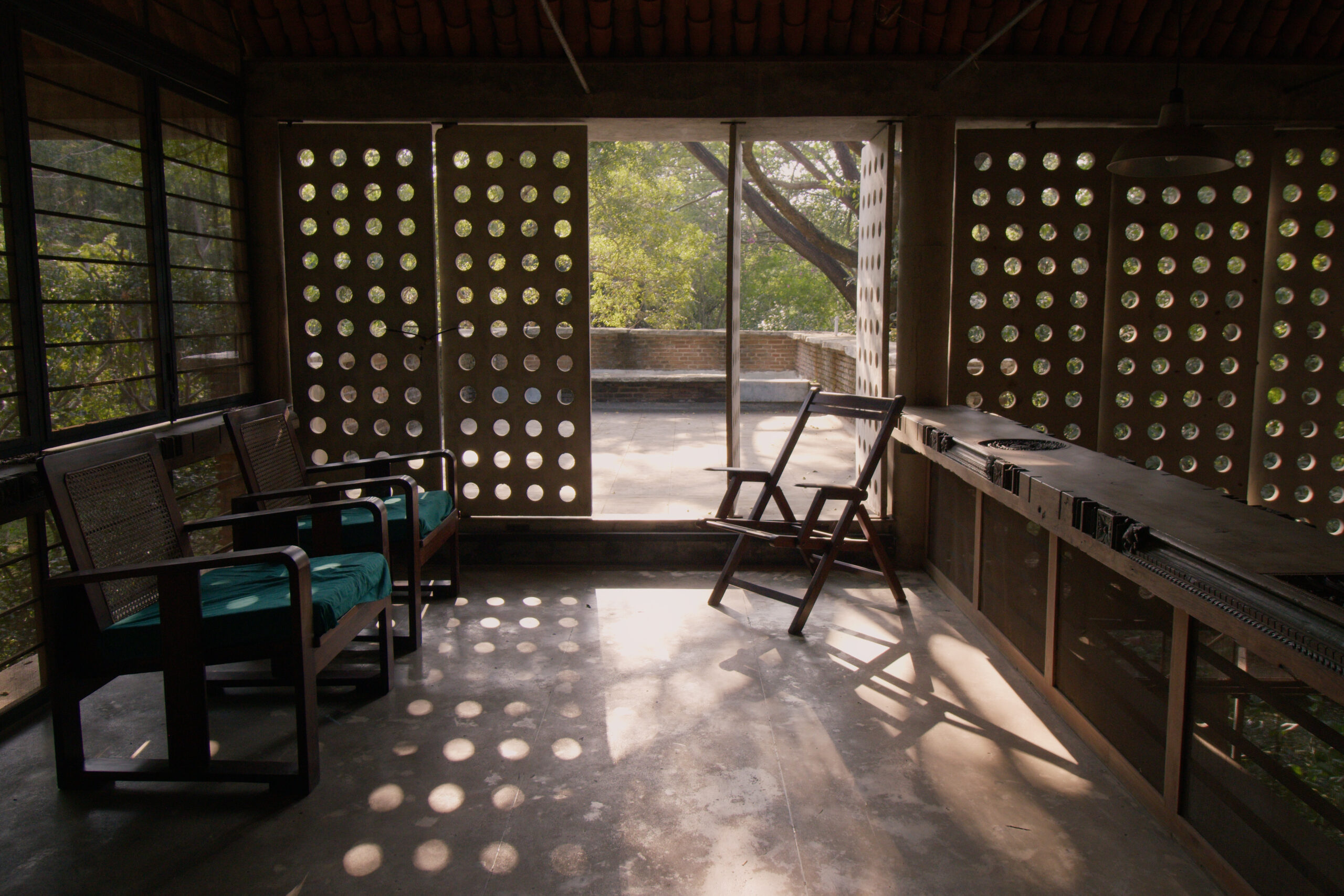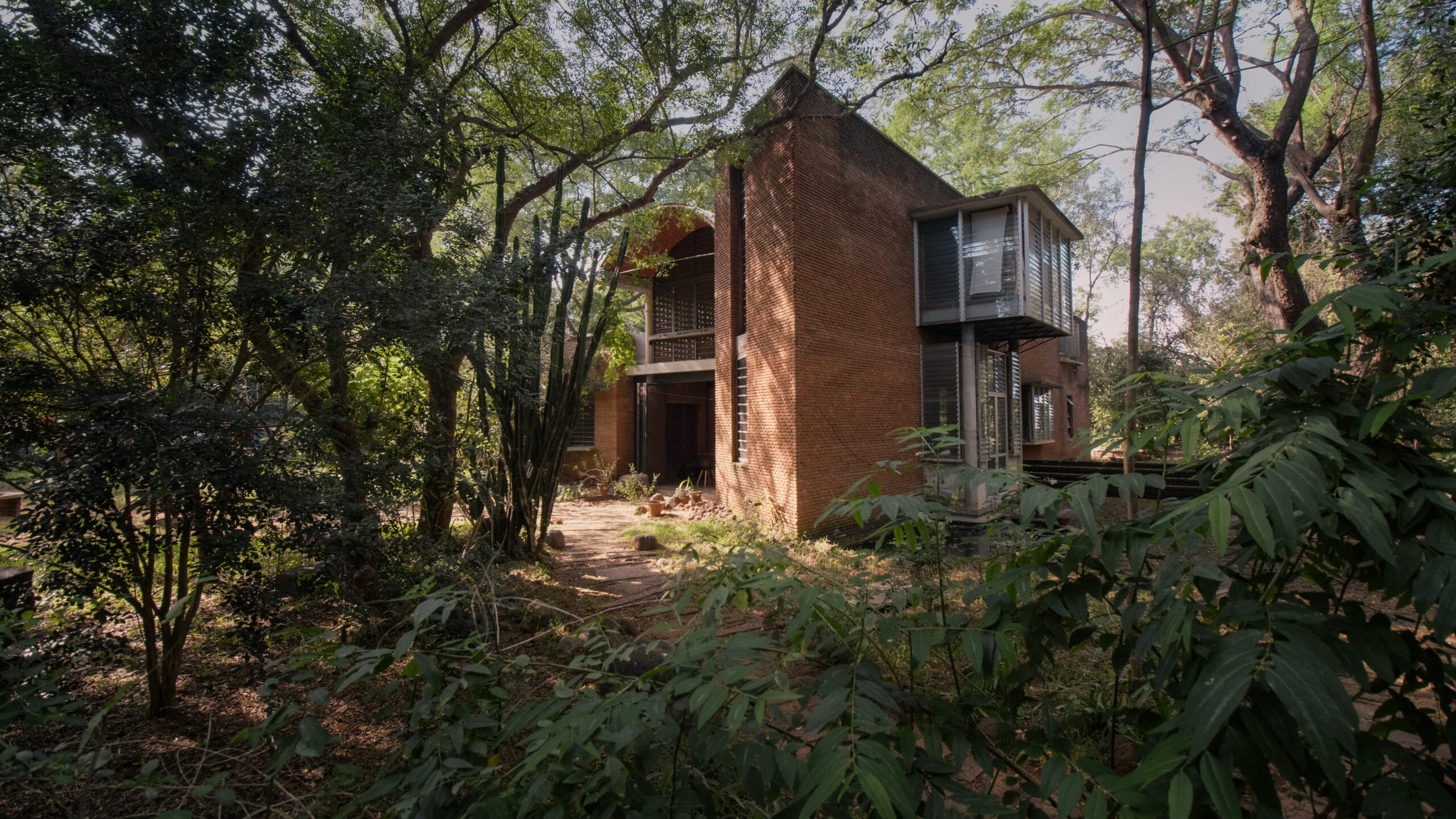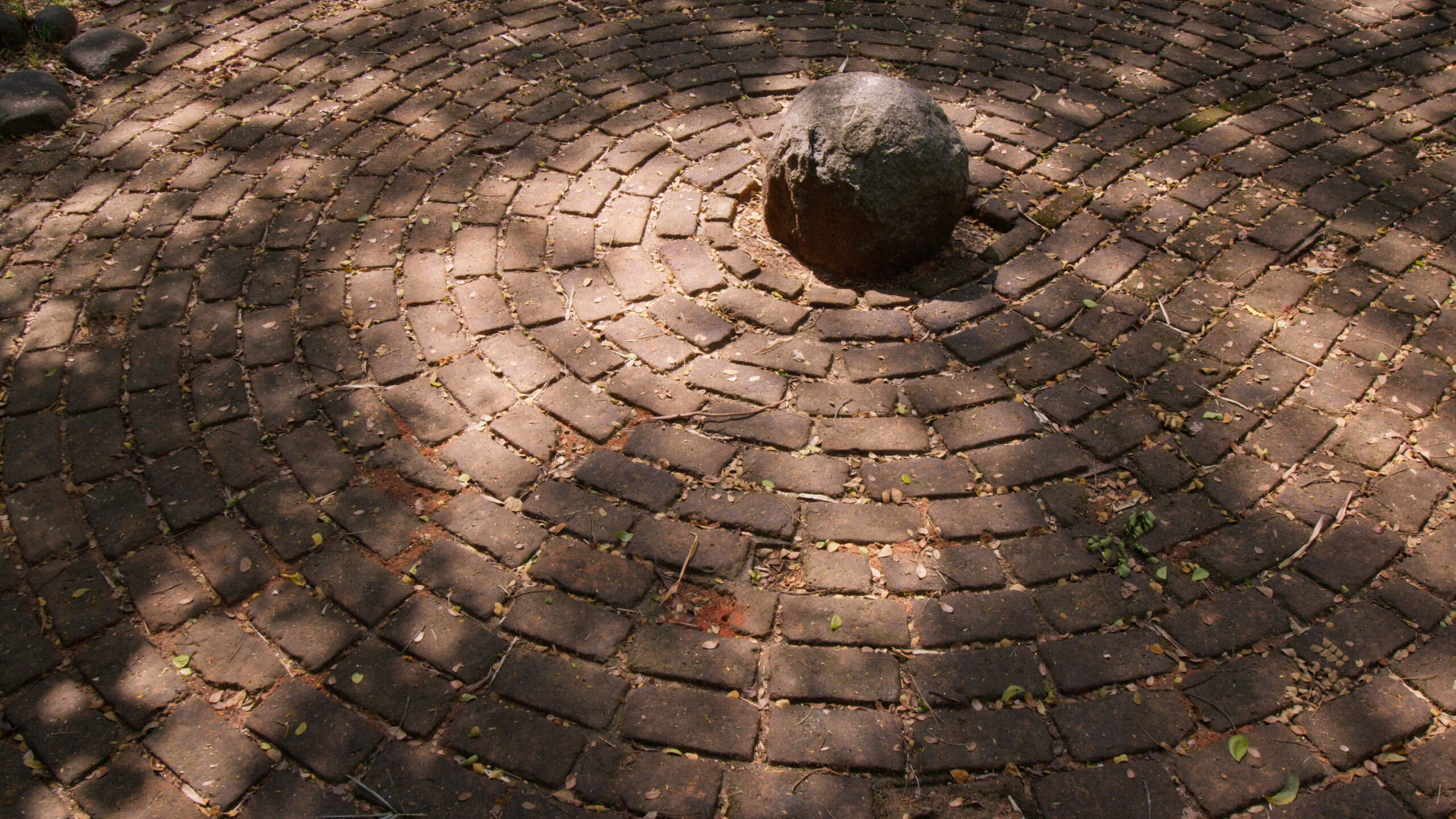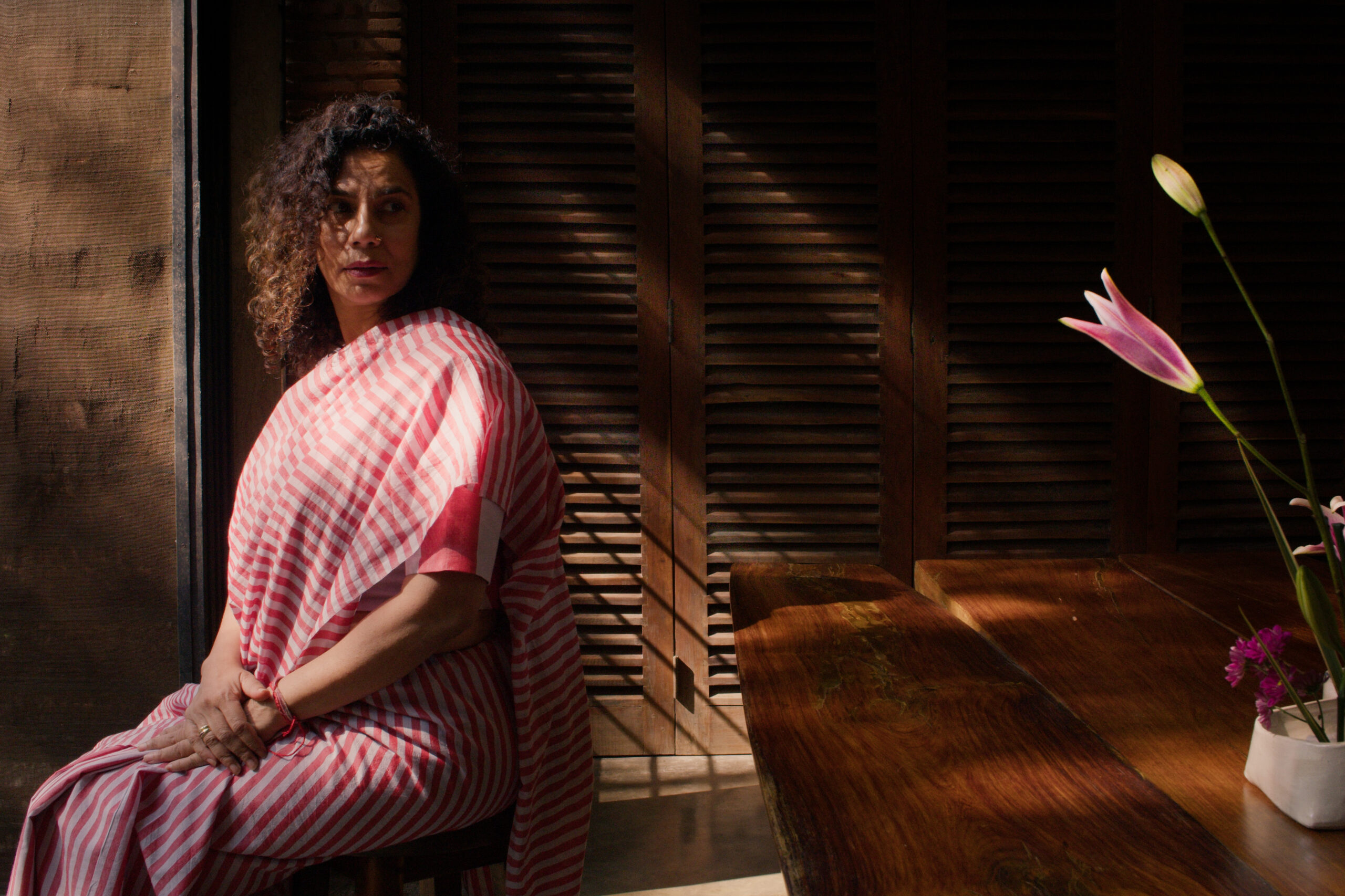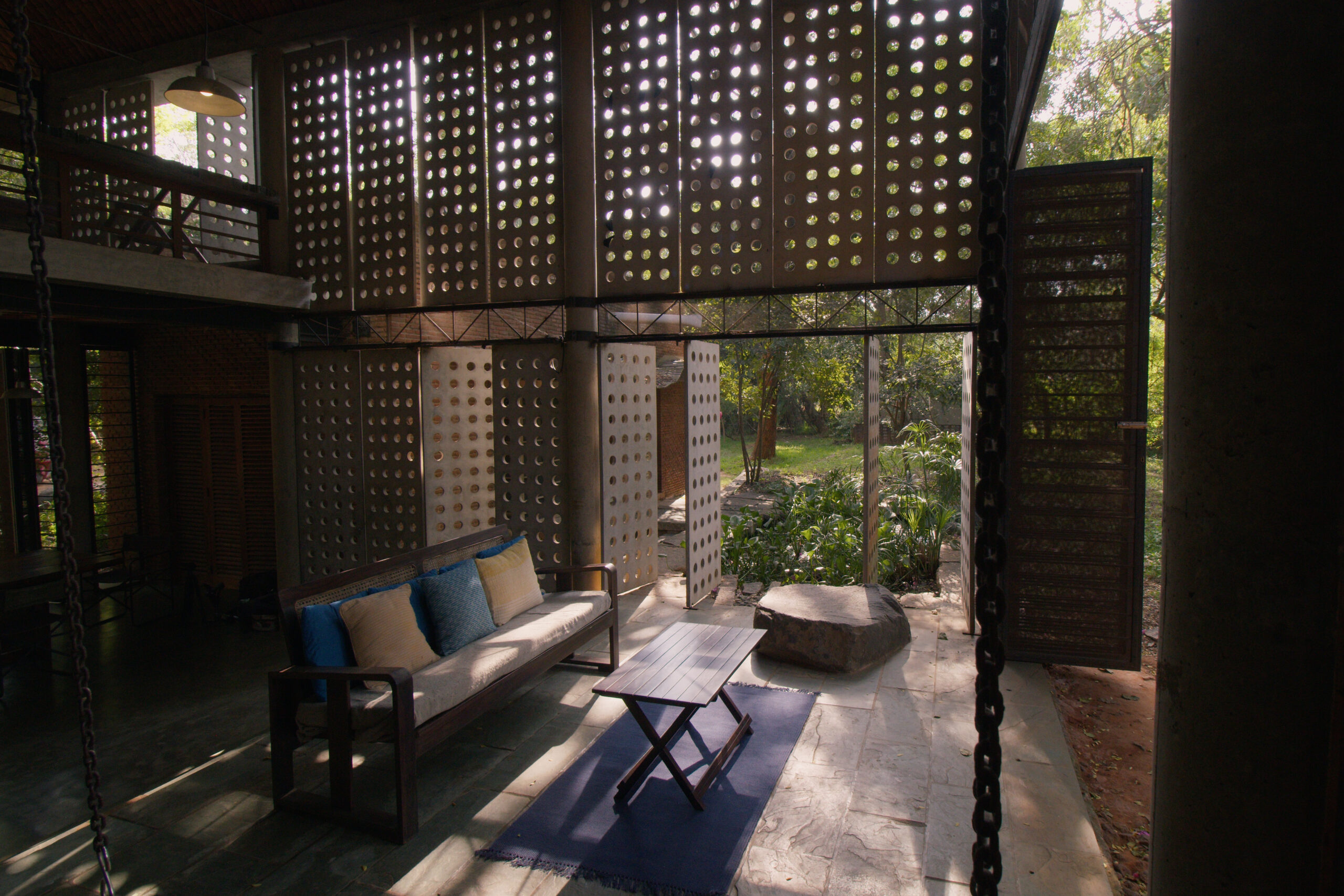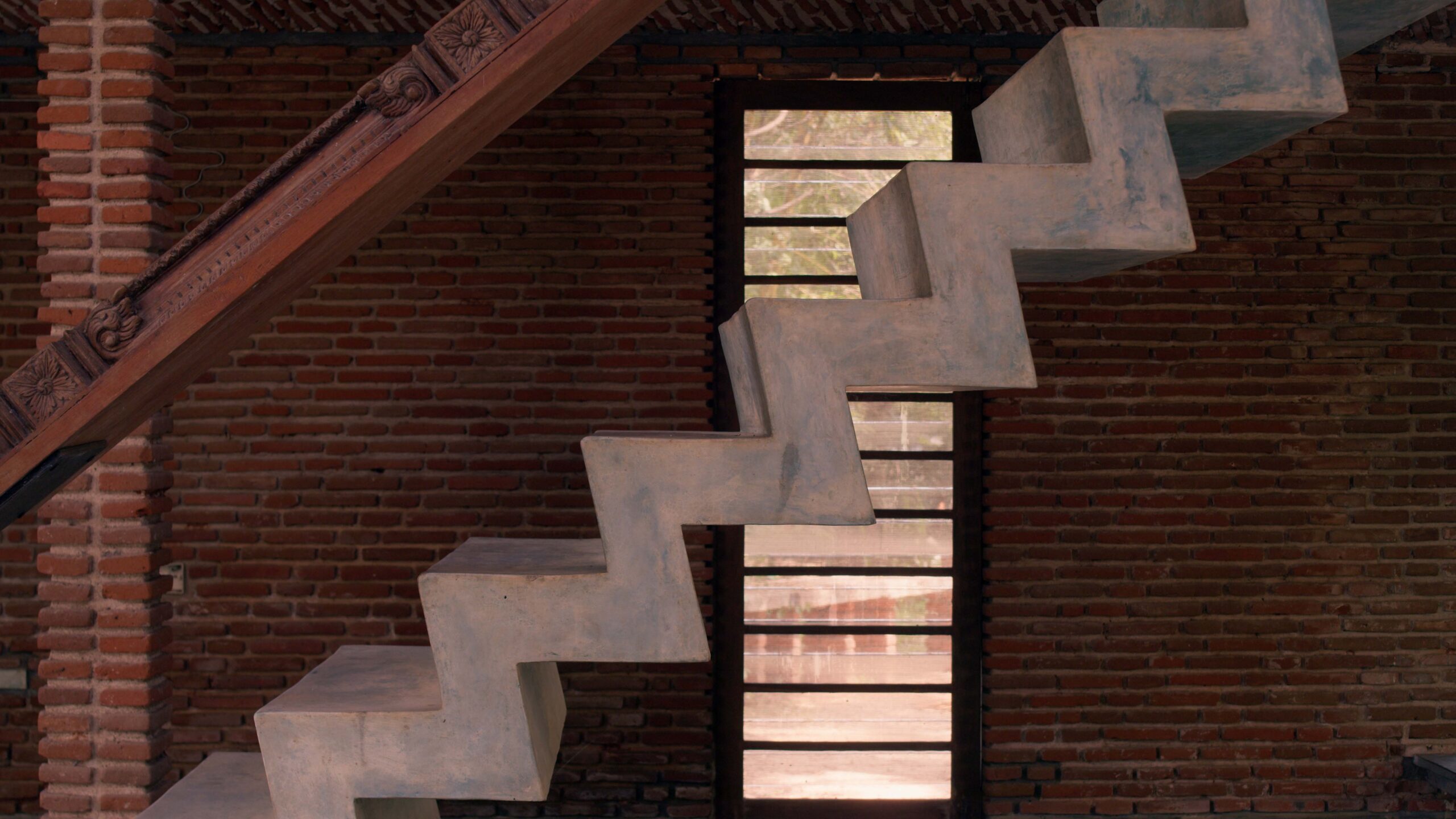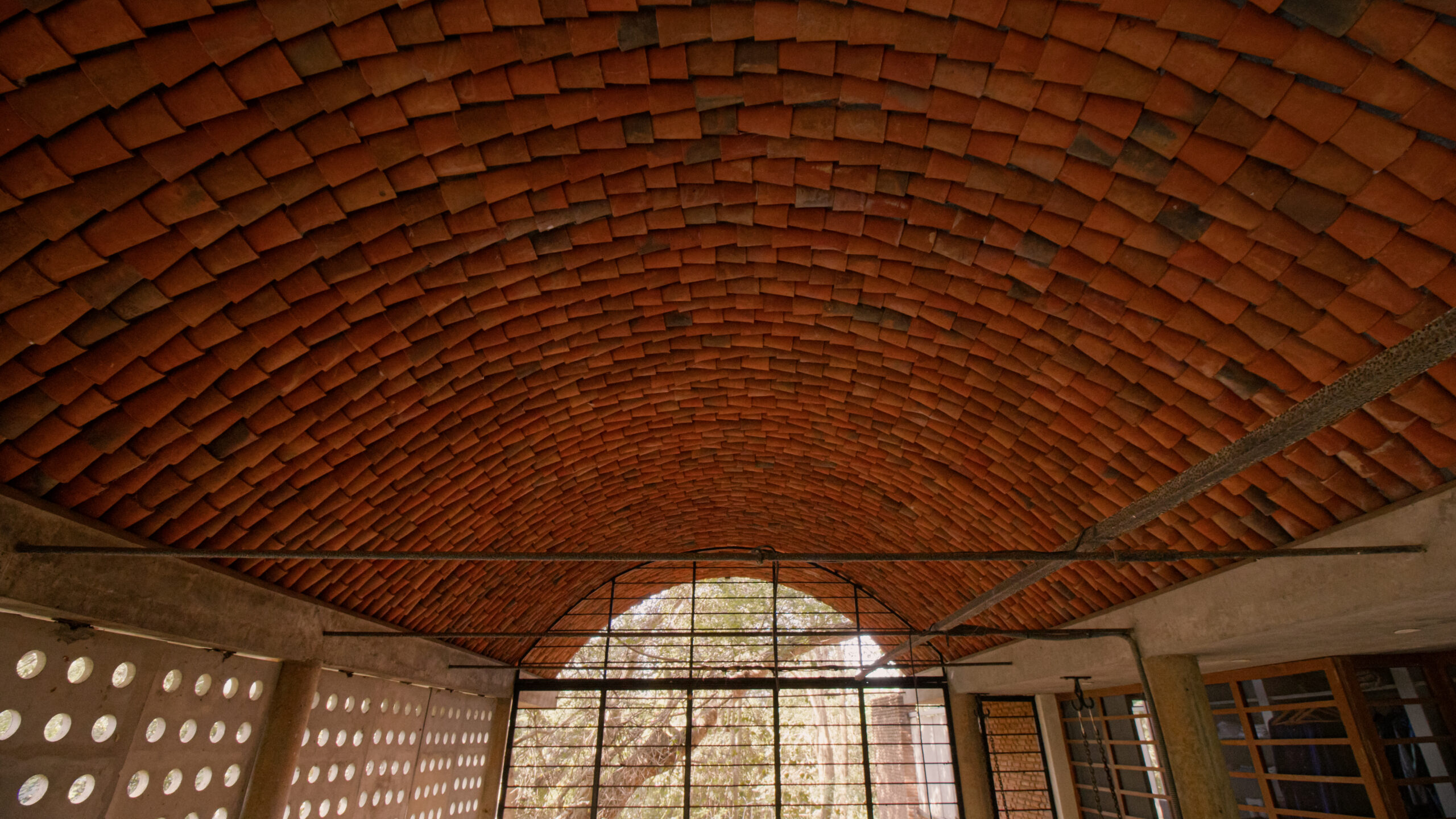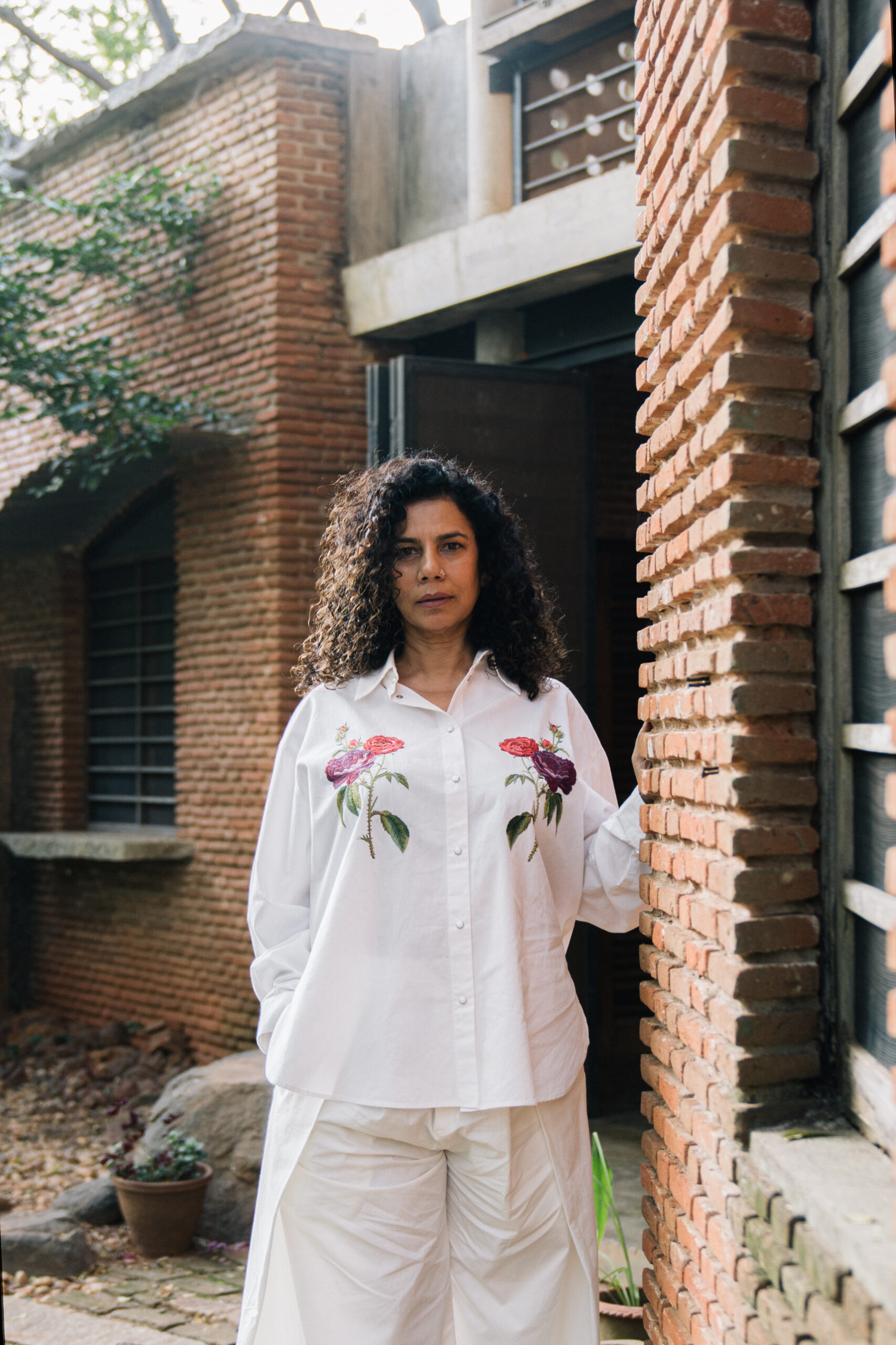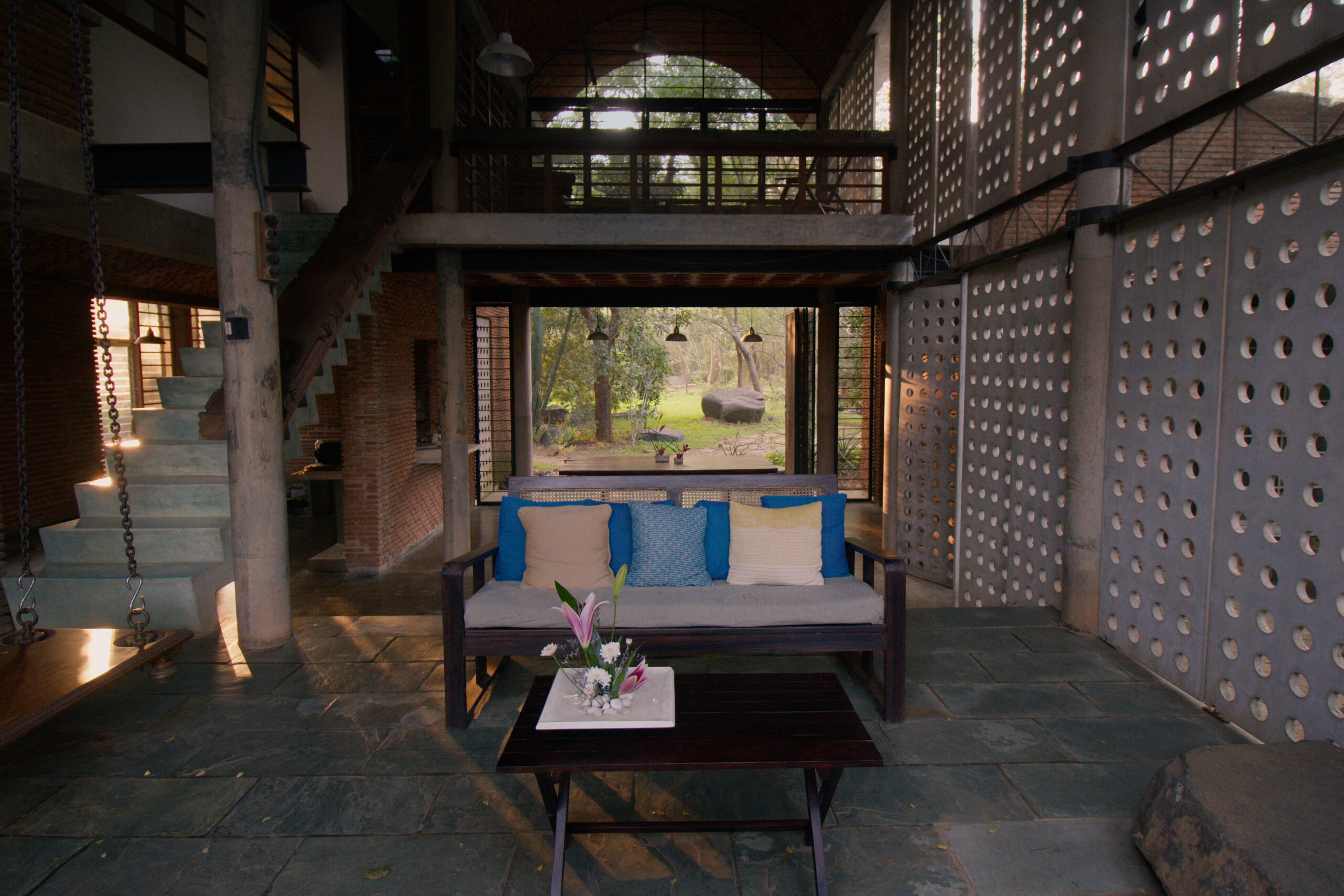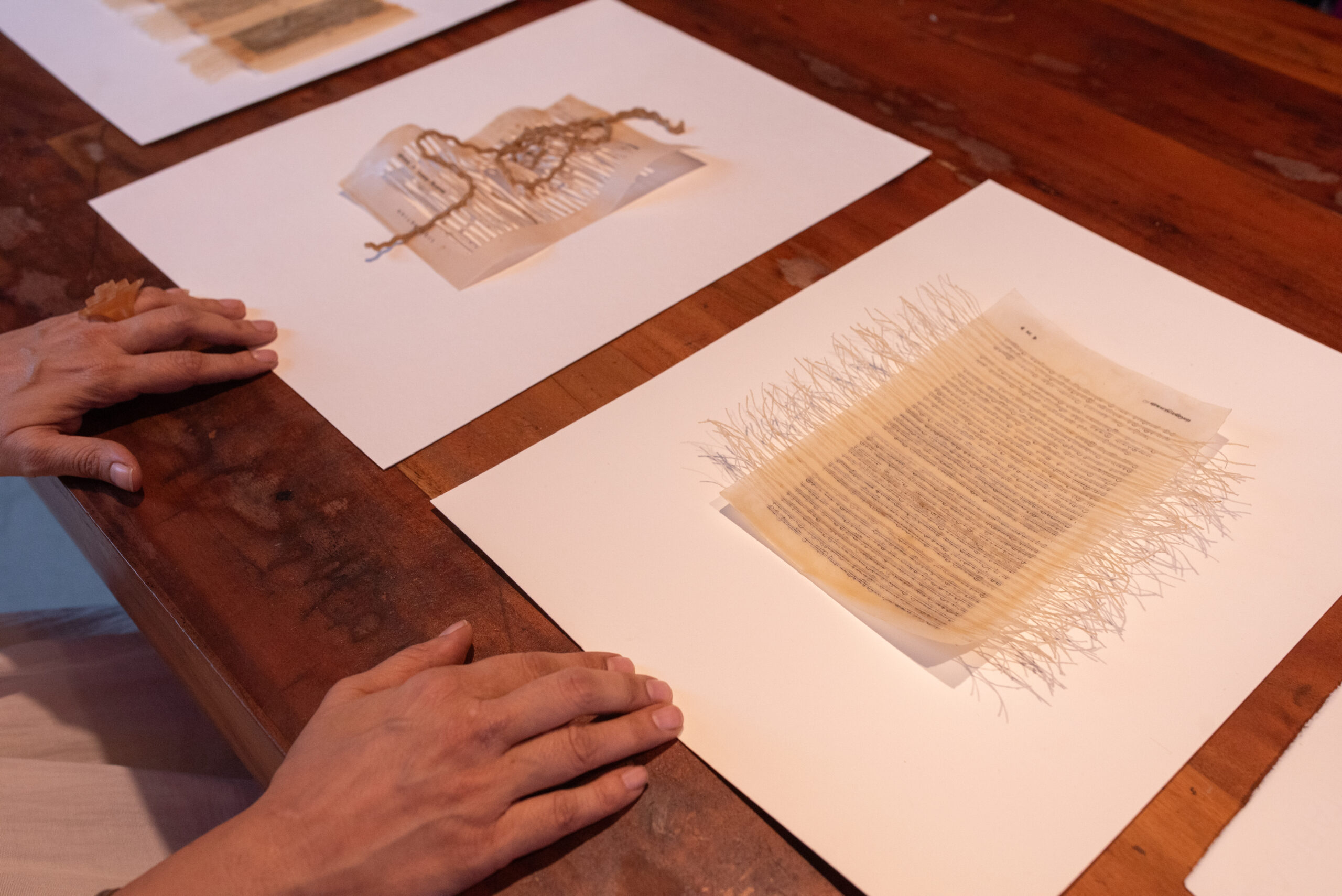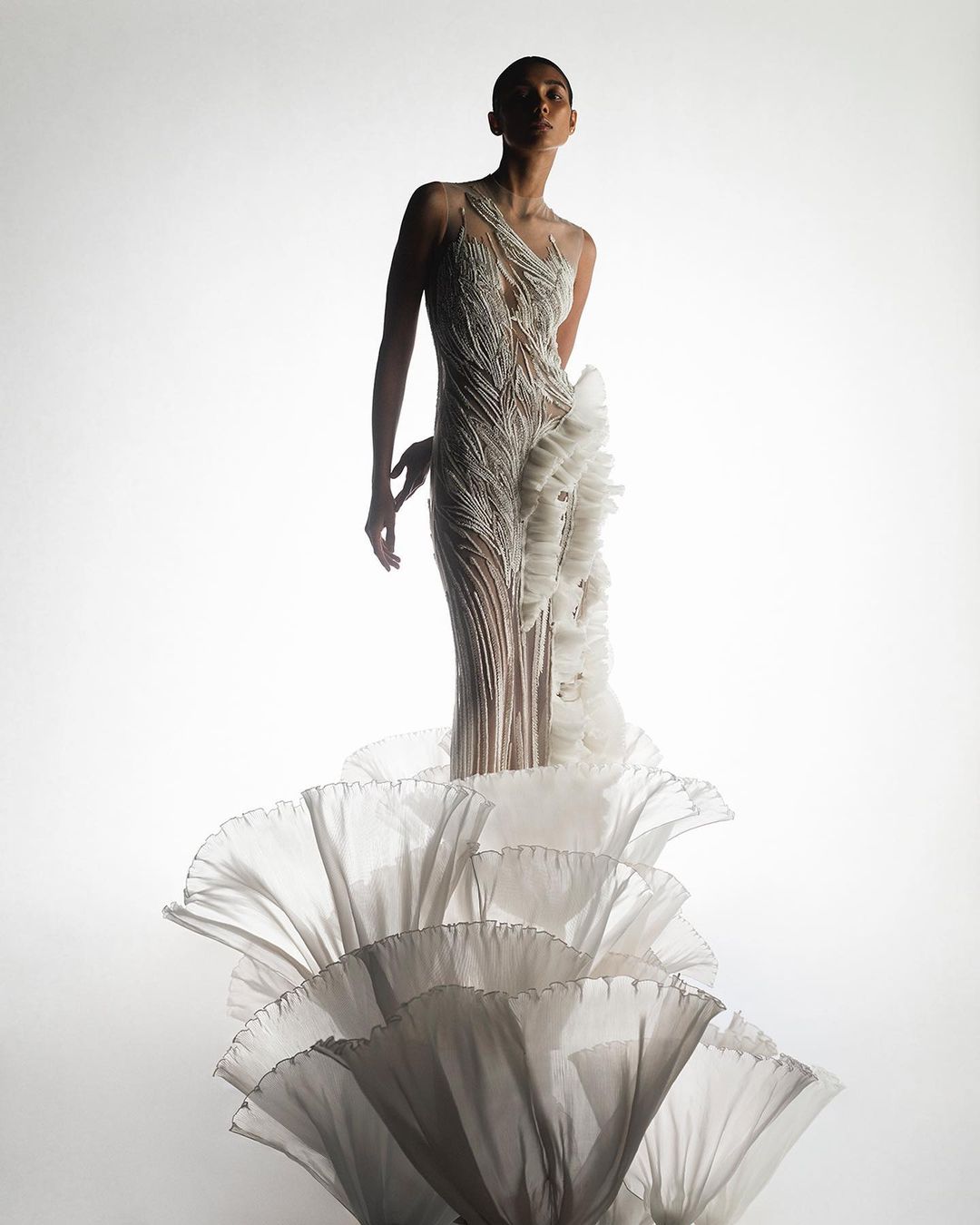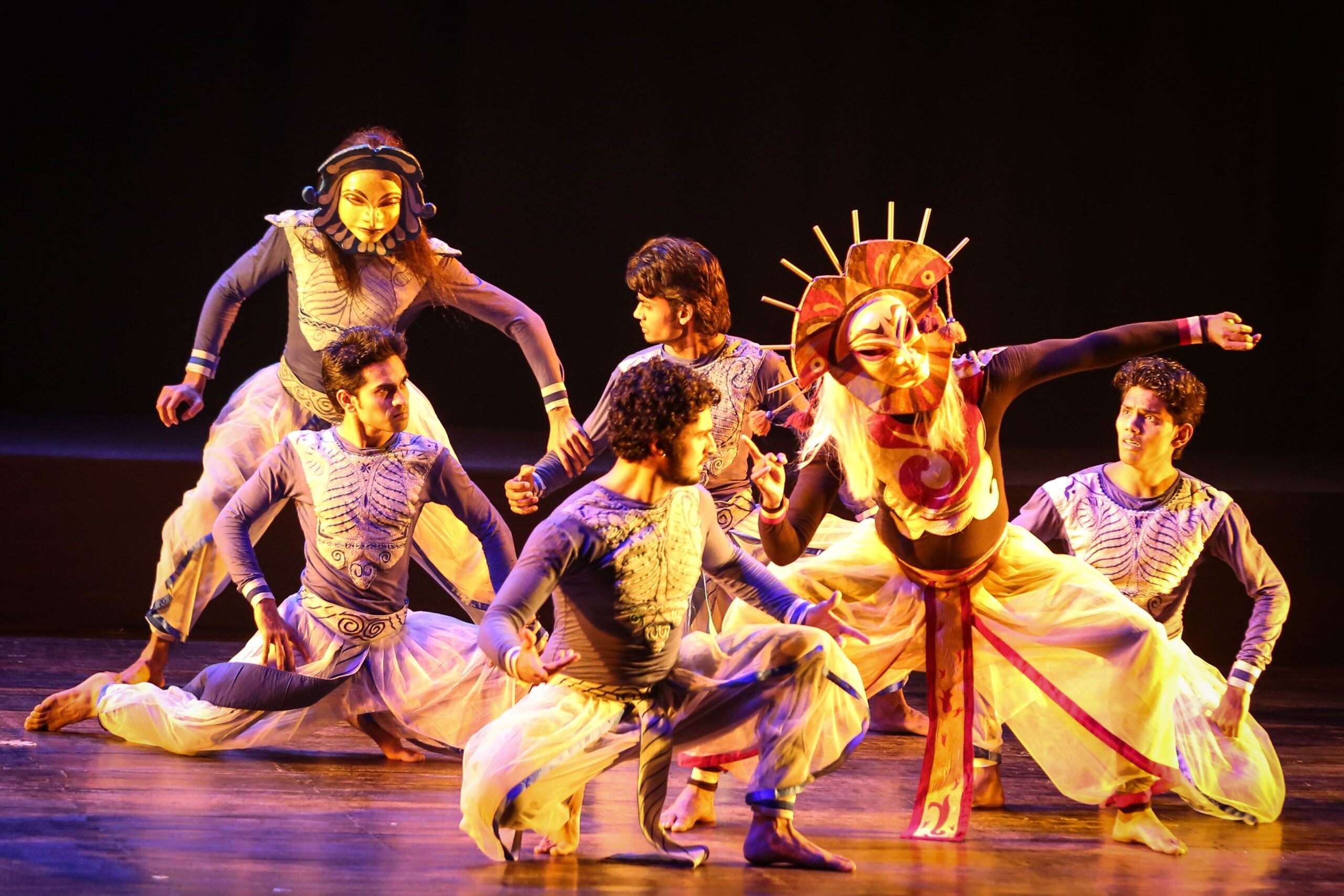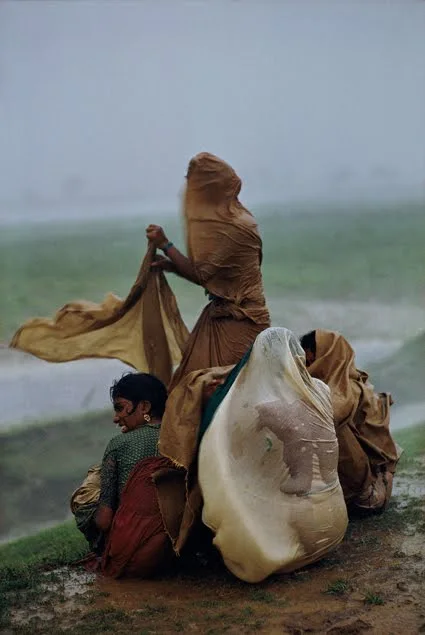An award-winning architect who started her practice in 1990, Anupama Kundoo’s work centres on biophilic design principles, ‘slow architecture’ and locally sourced materials that have low environmental impact. Kundoo has built extensively in India (especially in Auroville), and has the experience of working, researching and teaching in a variety of cultural contexts globally. Her notable projects include urban design and planning works, with her background in rapid urbanisation related development issues, about which she has written as well, extensively. Recently, she was appointed as the Director of Urban Development, Auroville. On this occasion, Svasa Life spoke to her about her journey, her design philosophies and her plans for her new role.
Exteriors of the Wall House in Auroville.
Kundoo’s architectural practice, spanning over three decades, focuses on traditional craft traditions and experimental construction techniques. She merges modern materials with the skills of artisanal communities to meet climactic, ecological and socio-economic needs. Her buildings are made of handmade materials assembled by local craftsmen, which she prefers over mass-produced production methods. Many of her buildings can be found in Auroville in southeastern India.
Kundoo moved to Auroville after graduating from the University of Mumbai in 1989, and this experimental city has had a strong impact on her architectural style. It was in Auroville where she built her first house—Hut Petite Ferme, using local materials such as granite, clay and coconut fibre.
Anupama Kundoo at The Wall House in Auroville.
“My work begins with and remains close to the deep human need to have purpose, refuge, and social engagement. It speaks through details; details that foster intimacy and variety, sensory and spatial. It is where makers engage with hand and mind to produce objects they are proud of, where they transform simple materials with care and intelligence into purposeful structures, where they are challenged to do more with less, and where they routinely exceed all expectations including their own. The act of building produces knowledge just as much as the resulting knowledge produces buildings. Each lesson learned and each incremental improvement drives micro-decisions that, over time, produce the disproportionate and cumulative increases that we call abundance,” states architect Anupama Kundoo.
Although Kundoo now lives in Berlin, she is still involved in the planning of Auroville. Her new role as Auroville’s Director of Urban Development will further this. Kundoo sees Auroville as a ground for experimentation and creativity. Over the last few decades, she has conceptualised many of Auroville’s landmark buildings including its town hall. The Wall House, which is her second home located outside the planned city limits of Auroville, in Auromodele, an area designated for research and experimentation, showcases her trademark design philosophies. The Wall House is built by local craftsmen using indigenous materials in new and inventive ways. Anupama believes there is a value in ‘slow architecture,’ which includes using traditional materials and age-old Indian craft techniques.
The Wall House, Auroville.
Moreover, Kundoo’s Wall House exhibits a unique marriage of modern design with the hand made way of doing things. She stresses the importance of preserving handcrafted techniques in architecture. The Wall House is also an example of site-specific architecture. It includes repurposed artisan-made terracotta bowls, embedded in the ceiling, and perforated ferrocement louvres to cut mass, regulate humidity, and enhance comfort. “When buildings are built by humans, they have humanity. In today’s world, we are seeing a very rapid transformation, where machine made is drowning the hand made. But, I believe there is value in the hand made way of doing things. There’s intelligence and there is sensitivity in these craftsmen’s hands…my house is proof that the hand skills of people should be celebrated,” remarks Kundoo.
Additionally, architect Anupama Kundoo’s buildings are known to blur the boundaries of indoor and outdoor living and bring nature inside. For instance, The Wall House defines spatial borders and transitional spaces in response to the heat and humidity of Auroville. Landscape design, a significant and inextricable part of the overall architecture, works with the existing topography to make the indoor-outdoor transition fluid, and the primary focus of the home. “Many people feel that this house is too open. I’m not ready to apologise for the fact that it is not homely in a conventional sense. I don’t think that a house should be seen as cutting you off from life,” adds Anupama.
Anupama Kundoo at the Wall House in Auroville.
As Auroville’s Director of Urban Development, Kundoo hopes to make it a pedestrian-centric city, making way for chance encounters where people can run into each other. With this proposal, her goal is to tackle the negative effects of rapid urbanisation such as pollution and congestion. She wants the city to grow with a biophilic approach wherein humans and nature coexist. Furthermore, with her future projects, Kundoo hopes to continue to claim space and time through architecture. She wants to remind architects to take time to think and build. “To take time is to be alive. As living beings, the meaning of our lives comes from the way we spend our time. We can reverse the notion that time is running out by getting time on our side, befriending it. We must not race against time, but build a good relationship with the time of our own life. Instead of trying to make time, we should take time!” mentions Kundoo.
While Anupama Kundoo’s works embody her philosophies, she doesn’t want to be pigeonholed into a particular design style. “The future is unknowable, human needs change, and the facts on the ground rarely cooperate with intentions on paper. For these reasons, I prefer fluidity and imprecision over prescriptive purity. Makers and users are invited to adapt creatively in service of themselves and their communities. As passionate as I am about my work, my work is not about me. My buildings have too much to do already – providing purpose, refuge, and engagement for all stakeholders — without also having to accommodate an Anupama Kundoo signature style,” concludes Anupama.
Words by Pallavi Mehra
Photographs by Anush S. Kumar and Kartikeya Saxena
